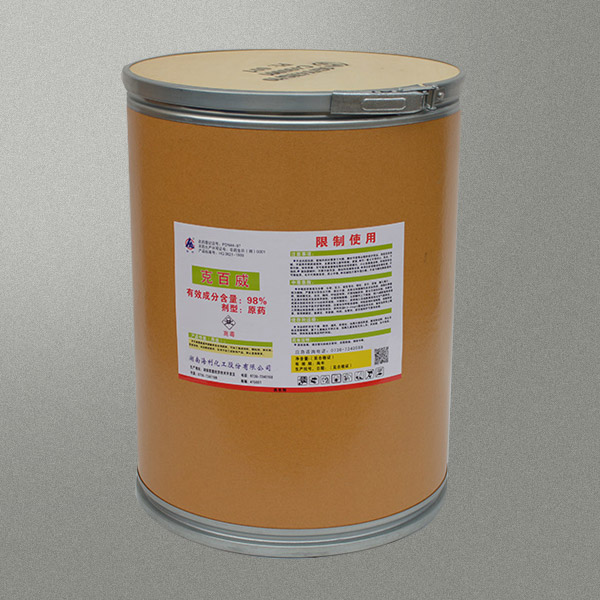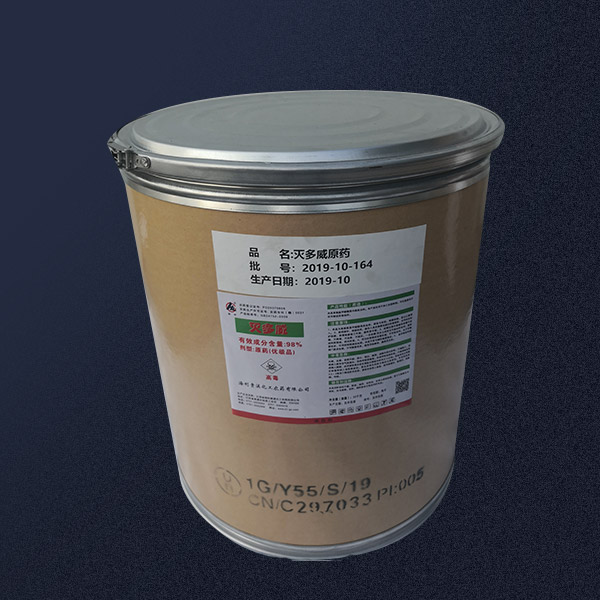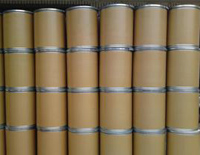Antioxidant
Other Auxiliary Agent
Petroleum Additives
Adsorbent
Water Treatment Chemicals
Rubber Additives
Adhesive Additives
Cross-Linking Agent
Flame Retardants
UV Absorbers
Organic Extractant
Resin Additives
Electronics Chemicals
Pesticide Additives
Building Chemicals
Plastic Additives
Oilfield Chemicals
Adhesive
Plastic Rubber Chemicals
Paper Additives
Molecular Sieve
Coating Additives
Textile Auxiliaries
Fluorescent Brightener
Polyethylene Glycol Derivatives
Coupling
Forest Chemicals
Leather Auxiliary Agents
Beneficiation Agents and Smelting Additives
Dye Auxiliaries
CAS:1563-66-2
Molecular Formula:C12H15NO3
Alias
More Information
2,3-Dihydro-2,2-Dimethylbenzofuran-7-Yl Methylcarbamate; 2,3-Dihydro-2,2-Dimethylbenzofuran-7-Ol; 2,2-Dimethyl-2,3-Dihydro-1-Benzofuran-7-Yl Methylcarbamate; 2,3-Dihydro-2,2-Dimethyl-7-Benzofuranol N-Methylcarbamate; (2,2-Dimethyl-3H-1-Benzofuran-7-Yl) N-Methylcarbamate; 2,3-Dihydro-2,2-Dimethyl-7-Benzofuranyl N-Methylcarbamate
Brief Introduction
Carbofuran is one of the most toxic carbamate pesticides on the market.
Suppliers
View More Vendors (2) >
CAS:16721-80-5
Molecular Formula:HNaS
Alias
More Information
Sodium Hydrogen Sulfide; Sodium Sulfhydrate; Sodium Mercaptide; Sodium Mercaptan; Hydrogen Sodium Sulfide; Sodium, Sulfanide; Sodium Bisulfide; Sodium Sulfanide; Hidrosulfurosodics; Hydrogenosulfuredesodium,Dihydrate; Hydrogensodiumsulfide; Sodiumhydrogensulfide(Nahs); Sodiumhydrosulphide; Sodiummercaptan; Sodium Hydrogen Sulphide
Brief Introduction
Sodium hydrosulfide is used in the dye industry to synthesize organic intermediates and auxiliaries for the preparation of sulfide dyes, in the leather industry to unhairing and tanning of raw leather, in the chemical fertilizer industry to remove the monomer sulfur in the activated carbon desulfurizer, in the mining industry to beneficiate copper ore, in the production of man-made fibers to dye sulfite, etc. it is the raw material for manufacturing semi-finished products of ammonium sulfide and pesticide ethiol, It is also used in wastewater treatment.
Suppliers
View More Vendors (2) >
CAS:16752-77-5
Molecular Formula:C5H10N2O2S
Alias
More Information
1-(Methylthio)Ethylideneamino Methylcarbamate; 3-Thiabutan-2-One, O-(Methylcarbamoyl)Oxime; S-Methyl N-(Methylcarbamoyloxy)Thioacetimidate; Mesomile; Methomex
Brief Introduction
Methomyl is a carbamate ester obtained by the formal condensation of methylcarbamic acid with the hydroxy group of 1-(methylsulfanyl)acetaldoxime. It has a role as an EC 3.1.1.7 (acetylcholinesterase) inhibitor, an EC 3.1.1.8 (cholinesterase) inhibitor, an acaricide, a nematicide, a xenobiotic, an environmental contaminant, an insecticide and an agrochemical. It is a carbamate ester and an aliphatic sulfide. It derives from a methylcarbamic acid and a 1-(methylsulfanyl)acetaldoxime.
Suppliers
View More Vendors (2) >
CAS:16816-67-4
Molecular Formula:C22H42N4O8S2
Alias
More Information
D-Pantethine; Dermorizin; Panthecin; Bis-(2-D-Pantothenoylamino-Ethyl)-Disulfide; Lipodel; Pantosin; Lbf Factor; Pantetina; Pantomin; Lbfdisulfide; Bis-(2-D-Pantothenoylamino-Aethyl)-Disulfid; Bis(N-Pantothenylamidoethyl) Disulfide,Lbf Factor,Pantethein Oxidized Form; Bis(Pantothenylamidoethyl) Disulfide; Pantethin
Brief Introduction
Pantethine (bis-pantethine or co-enzyme pantethine) is a dimeric form of pantetheine, which is produced from pantothenic acid (vitamin B5) by the addition of cysteamine. Pantethine is composed of two molecules of pantetheine linked by a bridging disulfide. Pantetheine is an intermediate in the production of Coenzyme A by the body. Most vitamin B5 supplements are in the form of calcium pantothenate, a salt of pantothenic acid, with doses in the range of 5 to 10mg/day. In contrast, pantethine is sold as a dietary supplement for lowering blood cholesterol and triglycerides at doses of 500 to 1200mg/day.
Suppliers
View More Vendors (2) >
CAS:17199-29-0
Molecular Formula:C8H8O3
Alias
More Information
(S)-(+)-Mandelic Acid; (S)-(+)-2-Hydroxy-2-Phenylacetic Acid; Benzeneacetic Acid, α-Hydroxy-, (S)-; (S)-α-Hydroxyphenylacetic Acid; 2-Phenyl-2-Hydroxyethanoic Acid; L-(+)-Mandelic Acid; (S)-(+)-Amygdalic Acid; Hydroxyphenylacetic Acid; Phenyl-Hydroxy-Acetic Acid; (S)-2-Hydroxy-2-Phenylacetic Acid; (S)-(+)-Mandelic; (S)-Benzeneaceticaci; (S)-Hydroxyphenylaceticacid; Benzeneaceticacid,Alpha-Hydroxy-,(S)-; L-(+)-α-Hydroxybenzeneacetic Acid
Brief Introduction
Mandelic acid is prepared from acetophenone, a by-product of phenol production from cumene. It is mainly used in organic synthesis and pharmaceutical industry, and is mainly used for chiral separation.
Suppliers
View More Vendors (2) >
Inquiry (
10
/ 10
)
Clear All
Sign In
Error!







